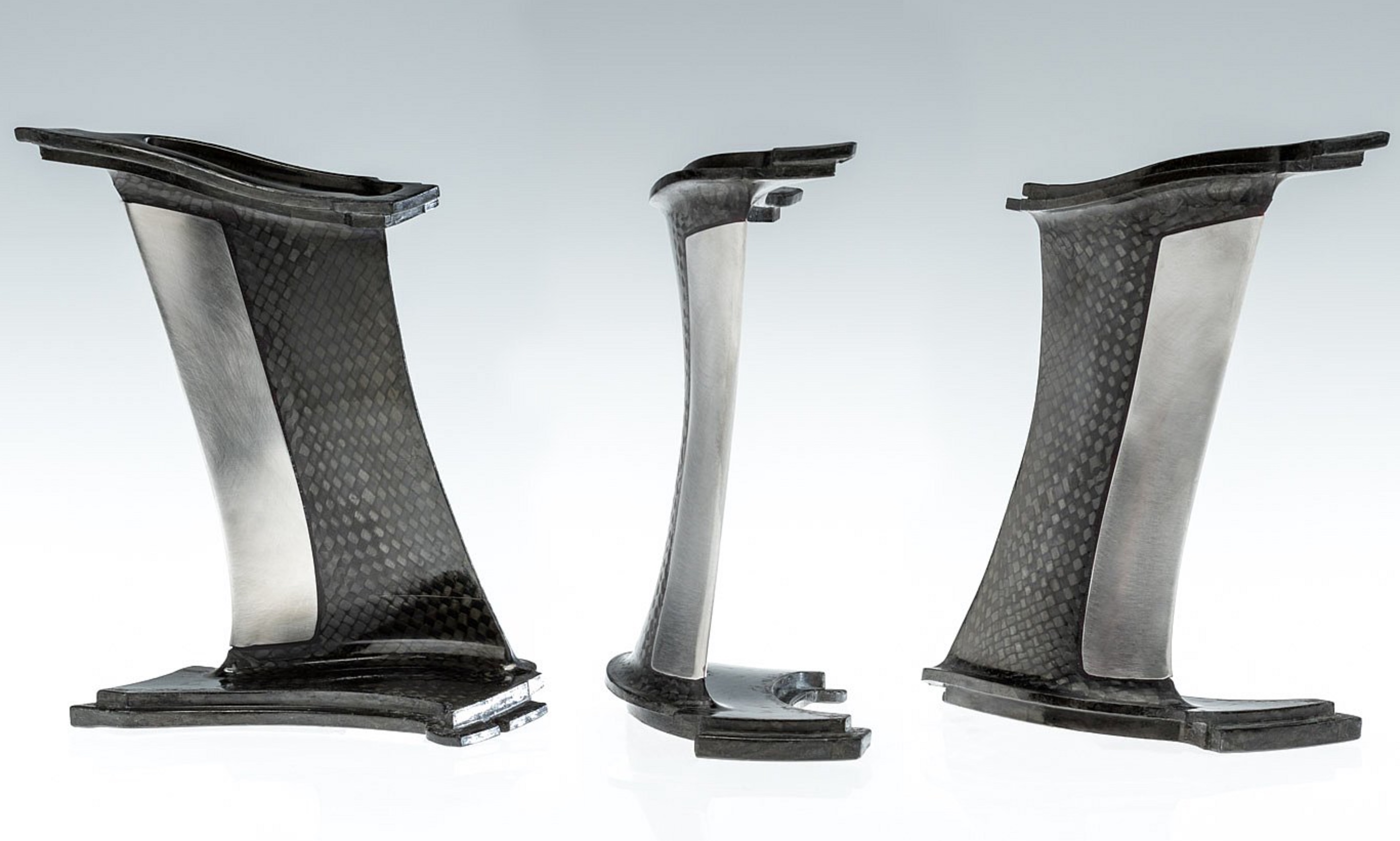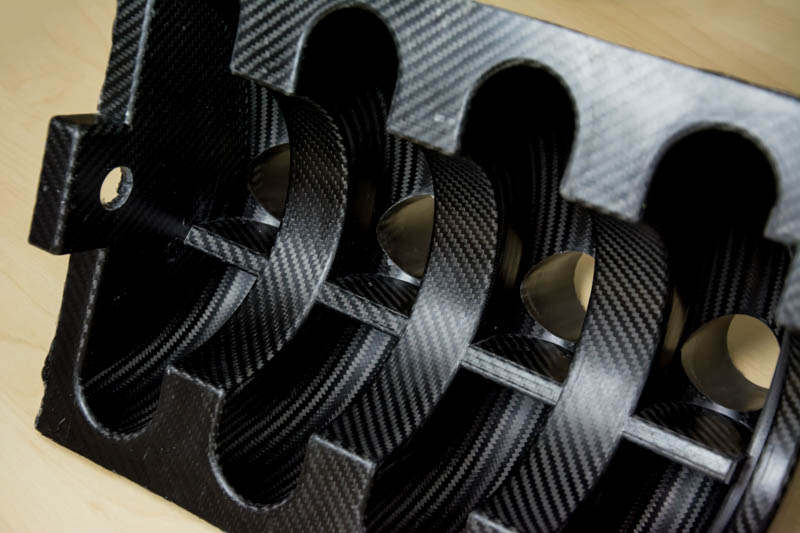Why Carbon Fiber?
A space-age material, developed in 1958, carbon fiber is extremely strong and exceptionally light weight. Sometimes called graphite fiber, carbon fiber has the potential to replace steel in high-performance products like race cars, aircraft, and other applications where the strength of steel is important and weight reduction is a premium.
 Carbon Fiber Jet Engine Fan Blade
Carbon Fiber Jet Engine Fan Blade
"The next generation of carbon-fiber composites could reduce passenger car weight by 50 percent and improve fuel efficiency by about 35 percent, without compromising performance or safety -- an advancement that would save more than $5,000 in fuel over the life of the car at today’s gasoline prices."
What Exactly Is Carbon Fiber?
Carbon atoms are bonded together in crystals that are more or less aligned parallel to the long axis of the fiber. The crystal alignment gives the fiber high strength-to-volume ratio. (Carbon fibers - Wikipedia)
Carbon fibers may be made from several different raw materials, but Polyacrylonitrile (PAN) is the most common. The crystalline structure of carbon atoms produces a fiber with high stiffness, high tensile strength, high chemical resistance, high temperature tolerance, and low thermal expansion.
Carbon is sold in the form of tow (yarn), woven or knitted fabrics, and prepregs (pre-impregnated with epoxy or other matrix resins). While carbon fiber is more expensive than traditional glass fiber, the stiffness and strength-to-weight ratio is significantly higher.
In fact, the properties of carbon fiber are close to that of steel, but it’s five times stronger and twice as stiff. And its weight is close to that of plastic. This makes the strength-to-weight ratio (as well as the stiffness-to-weight ratio) of carbon fiber much higher than either steel or plastic.
The process for making carbon fibers is part chemical and part mechanical. The raw material (typically, PAN) is drawn out into long strands or fibers. It is then heated to a very high temperature – but without coming into contact with oxygen. (Without oxygen, the fiber cannot burn.)
The high temperature causes the atoms in the fiber to vibrate violently, expelling most of the non-carbon atoms. This process is called “carbonization.” What remains is a fiber composed of long, tightly interlocked chains of carbon atoms.
The Future Is Carbon Fiber

The U.S. Energy Department, through its Clean Energy Manufacturing Initiative, has a goal of reducing the cost of carbon fiber manufacturing by 50%. The future looks bright for rapid development of carbon fiber materials and manufacturing. A total of $32 million is available in grants. A new Carbon Fiber Technology Facility at Oak Ridge National Laboratory is open to U.S. manufacturers. As a result, we expect to experience increasing interest in a wide variety of cutting-edge applications.
From bicycle wheels to turbine blades, new products will be developed for aerospace, transportation, sporting goods and many other industries. We have just started to see the rapid expansion for composites applications.
Some of these include:
- Alternative Energy – Used for wind turbines, compressed natural gas storage and transportation, fuel cells
- Fuel-Efficient Automobiles – Currently used in small-production, high-performance vehicles, but moving toward large-production series cars
- Construction and Infrastructure – Used to make lightweight precast concrete and earthquake protection
- Oil Exploration – Used for deep-sea drilling platforms, umbilical tubing, choke and kill lines, drill pipes
In fact, replacing steel car components with carbon fiber would reduce the weight of most cars by 60 percent, according to USA Today. This would reduce the car’s fuel consumption by more than 30 percent. It would also cut greenhouse gases and other emissions by 10 to 20 percent, according to researchers at the Oak Ridge National Laboratory.
With a lighter-weight body, automakers could then also build smaller, more efficient engines. Could carbon fiber be the key to reducing our dependence on foreign oil?
Model Die & Mold - Dedicated to Carbon Fiber and Composite Technology from the Beginning
Carbon fiber molds are on the cutting edge of material technology.
But working with carbon fiber requires a high skill level and multiple intricate processes to ensure high quality. We’ve got that.
Specialized tooling and machinery are also required in order to produce custom-fabricated, highly optimized parts and assemblies. We’ve got that, too.
Carbon fiber is expensive. And while the aerospace industry can use it right now at its present cost, it’s more of a challenge for automotive and other manufacturers. But as carbon fiber volumes go up, the price will come down.
With over 10 years of experience in designing and manufacturing carbon fiber molds, Model Die & Mold will make your vision come to life, as we continue to push the envelope and explore new technology.
When it comes to performance and profitability, you can count on Model Die & Mold.

